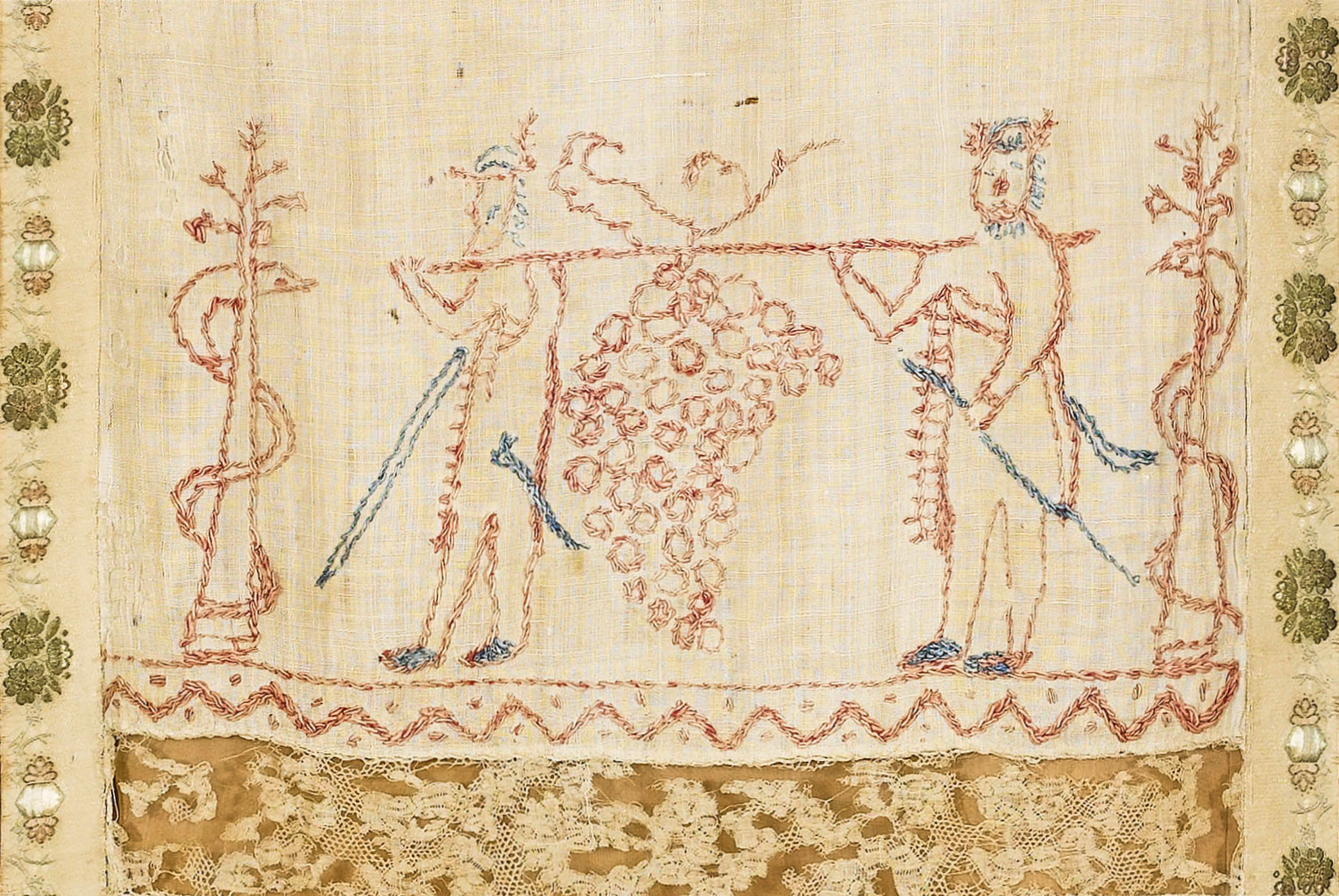The fifth book of Moses, which we begin reading this Shabbat, is commonly known as Deuteronomy. This name stems from the Greek Δευτερονομιον (δευτερο νομοσ) and literally means “the second rendition of the law” and is based on its early rabbinic name, Mishneh Torah. Deuteronomy is comprised of three separate speeches Moshe gives in first person on the eastern bank of the Jordan river at the Plains of Moab not long before the Children of Israel cross over into the Promised Land, and includes some additional poetry and narrative at its end. In his three speeches, Moshe goes over many of the laws and stories we know from the earlier books of the Torah, offering us a second rendition of what came before.
 Yad (Torah pointer), with inscription: “And this is the law which Moses set before the children of Israel” (Deut. 4:44), Venice, 1711/12, Gross Family Collection, Tel Aviv
Yad (Torah pointer), with inscription: “And this is the law which Moses set before the children of Israel” (Deut. 4:44), Venice, 1711/12, Gross Family Collection, Tel Aviv
However, Moshe’s versions of the laws and stories don’t always match the earlier accounts. When it comes to laws, the more notable examples include the following:
- Ma’aser, the tithing of the crops and animals: According to Leviticus (27:30-34) and Numbers (18:21-26), the revenue goes to the Levites, but according to Deuteronomy (14:22-29, 26:12, 28:14), it goes to the poor and disadvantaged among the people–which, by the way, includes the Levites.
- According to the previous books of the Torah, sacrifices were to be offered in any one of a number of existing temples, while Deuteronomy often states that sacrifice can be made only in a place chosen by God–implying of course, a Jerusalem of a later age.
- As they appear in Exodus 20:8, the Ten Commandments instruct us to “remember” (zachor) the Sabbath day whereas Deuteronomy 5:12 tells us to “keep” (shamor) it.
And in a number of stories, Deuteronomy’s version varies from the previous books:
- In this week’s parsha (Deuteronomy 1:9-18), Moshe tells of how he himself complained that his workload was too heavy, and proceeded to reconfigure the judicial system in such a way that not every little case would come to him. But many of us will remember that when this very same story is told in the book of Exodus (18:13-26), it is actually Moshe’s father-in-law, Yitro, the Priest of Midian, who brought about this change.
- In Numbers (13-14) God tells Moshe to send the spies to scout out the Promised Land, most of whom return with negative reports, leading to a crisis in his leadership, but in Deuteronomy (1:19-45) Moshe thinks of this on his own.
Spies returning with oversized grapes from The Promised Land. Haggadah, Prague 1901, Gross Family Collection, Tel Aviv
 Spies returning with oversized grapes from The Promised Land. Passover towel cover, Alsace 1799, Gross Family Collection, Tel Aviv
Spies returning with oversized grapes from The Promised Land. Passover towel cover, Alsace 1799, Gross Family Collection, Tel Aviv
We can usually find an explanation – political, theological or sociological – that might explain why a later author chose to change the story, or perhaps even why a contemporary author chose to tell the story or report the law differently. In any case, this phenomenon of inner Biblical interpretation is not unique to Deuteronomy in comparison to the other parts of the Torah. It is found within individual books (e.g., the two versions of the Creation story and the three versions of the Forefather and Foremother posing as brother and sister, both in the book of Genesis) and in all parts and genres throughout the 24 books of the Tanach, Hebrew Scriptures. This interpretive evolution is essential to the ongoing holiness of our sacred literature, for without it, the ancient text would stagnate and quickly become irrelevant.
And if our ancestors were comfortable reinterpreting the sacred text within the text itself – not to mention the more than 2000 years of literature devoted to biblical interpretation, much of it containing very different, and even sometimes exactly opposing views, of what is found in the original text–then we too are permitted to do so. In fact, one might even argue that we are obliged to continue this tradition of ongoing interpretation. This is not a particularly liberal approach to Judaism, it is an essential approach to our religious tradition.
Unfortunately, often we find people – in all faith traditions – who quote ancient sacred texts in their original form, often in a very selective way, in order to spread hate and to exclude certain individuals from the community. We do well to remember, in particular, this week before Tisha B’av, – the 9th of Av, dedicated to the memory of various events of destruction in our history – the rabbis’ admonitory interpretation that the Second Temple was destroyed due to sinat hinam, unwarranted hatred towards those with other views. As we continue reading in this period of the year from Moshe’s second rendition of the Torah, let us remember and even sanctify pluralism, multiple understandings of the sacred text and, therefore, multiple types of normative and fully legitimate beliefs and lifestyles.
Shabbat Shalom



